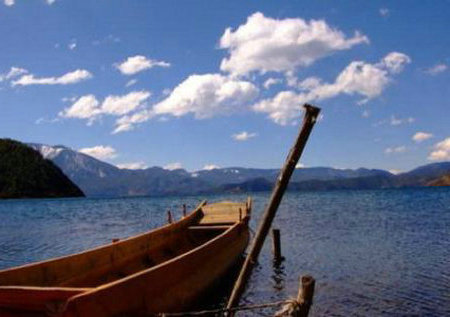
以听说为主的基于学习英语必修三unit2课件
项目内 容
教学内容一段录音,讲述王鹏去图书馆寻找健康饮食的
于是向这个专家请教。通过这段录音,引发学生对合理搭配饮食的讨论。
学习目标从以下学习目标中确定四类、每类至少一项作为自己的本课时学习目标。
语言知识使学生对合理、健康饮食有更深入地了解及如何合理搭配食物。
语言技能通过听力口语等各种活动,训练学生提取信息,表达观点的能力。
语言运用
(1)学会在听力中抓住要点的技巧
(2)学会把听到的内容用自己的语言表达出来。
文化意识了解合理搭配饮食的重要性,提高学生健康饮食的意识。
情感态度 在了解合理搭配饮食的重要性的同时,也注意生活和学习上的合理安排。
学习策略
(1)自主地在新旧语言知识之间建立联系,
(2)自主反思本单元所学到的语言知识和技能,
将之迁移并运用到要学习中,
(3)主动拓展与本单元主题相关的信息。
任务
课时任务:听一段录音,获取相关语言信息,再把这些信息运用在口语活动中,
给一个胖女孩提一些饮食方面的建议。
评价标准从以下标准中选定至少两项作为你本单元学习的评价标准。
1、理解听力材料的大概内容。
2、能把所听到的.信息运用到口语中。
3、借助同伴的启示与帮助,更好的完成任务。
学习
资源听力材料
预设
时间学习步骤学习目的教学方案学习方案学习资源
第1-5’导入引入
听力老师会用两个问题”Which illness do we still have today? “and “why we have this illness ?”引导学生进入听力材料,让学生对接下来的听力训练的内容有一个心里准备。用问题激发学生的讨论,从而激发学生对回答问题及相关知识的联想。学生通过讨论为接下来的听力任务做好背景知识准备。教师
第6-21’听力 进入听力训练,本课时的重点之一有了前面两个问题引入,再加上前面学过的READING部分,教师可以直接进入主题。让学生听一段录音之后,学生完成几个简单的问题,再听一遍录音,再完成几个细节题,循序渐进,由浅入深,学生可以大概获取听力材料的信息。首先提一些简单的问题,让学生能够轻易回答,即能够让学生获得成功的喜悦,也可以让学生对材料有个了解。之后,再进入深一些的问题。
听力材料
第22-25’信息
展示让学生把听到的信息以说的方式展示出来。 教师把学生所听到的材料信息用语句活词语的方式展示出来学生把自己听到的内容,加上自己的理解,通过口语方式展示出来。学生
话语
第26’任务
展现 了解任务让学生了解接下来的任务,就是为一个胖女孩制定健康的饮食计划。了解任务。
第27-39’任务讨论 强化语用意识和交流意识让学生按照自己的观点
尽情自由的讨论通过前面的讨论、听力,已经使学生把握了许多相关的信息,接下来的任务就是让他们学会如何运用这些信息以口语的形式表达出来。自己与同伴的讨论
第40’任务完成 修改完善自己的讨论向全班同学呈现自己的讨论成果。学生话语
Great European Cities
Paris is the capital and largest city of France, situated on River Seine. It is one of the most beautiful cities in the world and is visited by more than eight million tourists every year. The most popular place for tourists is the Eiffel Tower, the famous symbol of Paris. One of the world’s largest art galleries, the Louvre, is also located in Paris. The city is also located in Paris. The city is also famous for its restaurants, cafes and theatres. About two-thirds of France’s artists and writers live in Paris. BARCELONA
Barcelona is the second largest city of Spain and is situated on the northeast coast, about five hundred kilometres east of the Spanish capital, Madrid. One of Barcelona’s most famous landmarks is the Church of Sagrada Familia, which was designed by an architect called Antonio Gaudi. Gaudi worked on the project from 1882 until his death in 1926. The church hasn’t been finished yet! FLORENCE
Florence is an Italian city which became famous because of the Renaissance, a great artistic movement which began in the 1300s and lasted for three hundred ears. During the Renaissance, some of the greatest painters of all time lived and worked in Florence. Many of Florence’s most beautiful paintings and sculptures were produced by great artists such as Leonardo da Vinci and Michelangelo. Florence is visited each year by about a million tourists who come to see the art galleries, churches and museums. The Uffizi Palace is the most famous art gallery in the city.
Athens, the capital of Greece, is known as the birthplace of western civilization. Two thousand four hundred years ago, it was the world’s most powerful city. Buildings such as the Parthenon on the Acropolis Hill were built during this period. Greece’s best writers lived in ancient Athens. Their work has influenced other writers ever since.
The Human Development Report
In the year 2000, 147 world leaders agreed to work together to reduce poverty by 2015 or earlier. From this agreement came the Human Development Report.
One of the most important sections of this report is the Human Development Index. This examines the achievements of 175 countries. The Index measures a country’s achievements in three ways: life expectancy (how long people usually live), education and income. The index has some surprises. Norway is at the top of the list, while the US is at number 7. The other top five countries are: Iceland(2), Sweden(3),Australia(4), the Netherlands(5). The UK is in the thirteenth position, while China is in the middle of the list. The bottom ten countries are all African countries, with Sierra Leone(in West Africa) at the bottom of the list. The report describes eight Development Goals. The most important goals are to:
Reduce poverty and hunger;
Make sure that all children have education up to the age of 11; Fight AIDS and other diseases;
Improve the environment of poor people, e.g. make sure they have safe drinking water; Encourage developed countries to give more help to other countries.
The 2003 Human Development Report gives examples of successful development. For example, in nine years, China increased life expectancy by 13 years. In the last ten years in China, 150 million people moved out of poverty. However, the challenges are still great. Every day 799 million people in developing countries are hungry. Over half of these are in South Asia or Africa. Although more than 80% of children in developing countries go to primary school, about 115 million children are not being educated. More than 1 billion people in developing countries do not drink safe water. However, in other regions of the world, e.g. Eastern Europe, water is now mostly safe to drink.
The report shows that we are making some progress but that we need to make greater efforts. Although developed countries give some financial help, they need to give much more. Interestingly, the countries that give the most money are the Netherlands, Norway and Sweden. These are among the five richest countries in the world , so it is right that they should do so.
The Violence of Nature
What is a Tornado?
A tornado is a rotating column of air from a thunderstorm to the ground. The most violent have winds of more than 400 kilometres per hour. Almost all of them occur in the US, in the area from Texas in the southeast to South Dakota in the north.
Tornadoes can pick up cars, trains and even houses and put them down in the next street—or even in the next town. They can tale the fur off the back of a cat and the feathers off a chicken. They can destroy houses, but leave the furniture inside exactly where it was.
On average, there are 800 tornadoes in the us each year, causing about 80 deaths and 1500 injuries. The worst tornado of all time occurred in 1925, affecting three US states: Missouri, Illinois and Indiana. By the time it ended, more than 700 people had been killed and 2700 had been injured. What Is a Hurricane?
Hurricanes are strong tropical storms, and they usually occur in the southern Atlantic Ocean, the Caribbean Sea and the Gulf of Mexico. There are violent winds of 120 kilometres per hour or more, which cause huge waves, heavy rain and floods. There are on average six Atlantic hurricanes each year and they usually affect the east coast of the US from Texas to Maine.
The worst hurricane disaster of all time occurred on the 8th September 1900 in Galveston, Texas. Winds of 200 kilometres per hour and five-metre-high waves hit the city. The disaster killed 6000 people in a population of 37000 and destroyed 3600 buildings. An Extraordinary Event
This is a story about the 1900 Galveston hurricane. Charles Coghlan was a nineteenth-century Irish actor who went to live in Canada. He then moved to New York, where he became famous. By the late 1890s, he had moved to Galveston, where he died in 1899, a year before the hurricane struck. The cemetery where Goghlan was buried was destroyed by the hurricane and Goghlan’s coffin ended up in the sea.
Eight years later, the coffin was found by fishermen in the sea near his home on Prince Edward Island in the east of Canada. The Gulf Stream had carried it 3000 kilometres up the eastern US coast to Prince Edward Island. Coghlan traveled back to Canada—after he had been buried in Texas!
Sandstorms in Asia
Sandstorms have been a major disaster for many Asian countries for centuries. Scientists have tried many ways to solve this problem and in China, a mass campaign has been started to help solve it.
Sandstorms are strong, dry winds that carry sand. They are often so thick that you cannot see the sun, and the wind is sometimes strong enough to move sand dunes. The four main places in the world where there are sandstorms are Central Asia, North America, Central Africa and Australia. Ren Jianbo, from Inner Mongolia described a terrible sandstorm he experienced as a child in the desert. “To have been caught in a sandstorm was a terrible experience,” he said. “There was nothing to be done. It was the most frightening and the most dangerous situation I’ve ever been in. You just had to hope you’d survive. I thought I was going to disappear under the sand.” Northwest China is part of the sandstorm centre in Central Asia. Sandstorms begin in desert areas. Sandstorms in China appear to have increased in recent years as a result of “destertification”. This is a process that happens when land becomes desert because of climate changes and because people cut down trees and dig up grass.
Sandstorms sometimes affect Beijing. Citizens wake up to an orange sky and strong winds that cover the city in a thick, brown-yellow dust. The storms sometimes continue all day and traffic moves very slowly because the thick dust makes it difficult to see.
The Chinese Central Weather Station can forecast a sandstorm some weeks before it arrives in Beijing, but the strength of the storm sometimes surprises people. When a sandstorm arrives in the city, weather experts advise people not to go out. Huang Xiaomei, who lives in Beijing says, “To be cycling in a sandstorm is frightening. The winds are very strong. It’s difficult to breathe and the dust makes me ill. So if you want to go out, you’d better wear a mask.”
The desert is only 250 kilometres away to the west of Beijing. To prevent it coming nearer, the government is planting trees. Already the government has planted more than 30 billion trees and plans to continue planting for the next five years.
Philosophers of Ancient China
Ancient China was a place where states were often at war with each other. But it was also a time when there were many great philosophers. Confucius is the philosopher whose influence has been the greatest. He stressed the importance of kindness, duty and order in society. Chinese society was influenced by these ideas for more than 2000 years.
Mencius was a thinker whose teachings were very similar to those of Confucius. Mencius was born in 372 BC. His father died when he was young, and he was brought up by his mother. He became a student of Confucius’s ideas, and was then given an important position in the government of a state. However, when he saw that the ruler was not following his advice, he resigned. For many years he traveled from state to state, teaching the principles of Confucius. He then became an adviser to another ruler. He spent his last years preparing a book of his teachings called the Book of Mencius. Mencius believed that the reason why man is different from animals is that man is good. He taught that if the government was kind, then people would be good. He believed that people were more important than rulers, and hated the state when it treated people badly.
Mozi was another teacher who was very influential. Born in 476 BC, he came from a family which was very poor. He became famous for his unusual clothes and behaviour. Mozi founded the philosophy called Mohism. In some ways, his beliefs were similar to those of Confucius. For example, he considered that government was most important. As a result, he spent many years trying to find a state where people would follow his teachings. Mozi believed that all men were equal. His ides of love was different from the Confucian idea of kindness. Mozi taught that we should love all human beings and look after those who are weaker than ourselves. He hated the idea of war. Mozi died in 390 BC.
The Three Gorges Dam
“Walls of stone to hold back clouds and rain”
Mao Zedong wrote a poem in which he dream of “walls of stone to hold back clouds and rain till a smooth lake rises in the narrow gorges”. Now his dream has come true. The power of the Yangtze River, which is the world’s third longest river, has been harnessed by the Three Gorges Dam.
The Three Gorges Dam, which is the biggest construction project in China since the building of the Great Wall and the Grand Canal, has been built to control flooding and provide hydro-electric power for the central region of China. The dam is nearly 200 metres high and 1.5 kilometres wide. It is the largest hydro-electric power station and dam in the world and has cost more than any other construction project in history.
Sun Yan-sen, who was the leader of the 1911 Revolution, first suggested the idea of a dam across the Yangtze River in 1919. Three quarters of China’s energy is produced by burning coal. In 1993, China used 1.2 billion tons of coal for heating and generating electricity. Unfortunately, burning coal causes serious air pollution and increases global warming. The dam will generate electricity equal to about 40 million tons of coal without causing so much air pollution.
The reservoir has flooded 2 cities, 11 counties, 140 towns and more than 4000 villages. More than a million people who lived in the region have moved from their homes. Now they’re living a happy new life in different areas.
The Three Gorges area is one of the most beautiful areas of China and the project has flooded some of China’s most famous historical sites, including the Qu Yuan Temple, the Han Watchtower and the Moya Cliff carvings. About 800 historical relics have been submerged. Some of them are being removed and some are being put into museums.
1.I didn’t mean to offend you.
我不是故意冒犯你。
2.I was wondering if you were doing anything this weekend.
我想知道这个周末你有什么要做。
3.May I have your attention., please?
请大家注意一下。
4.This is great golfing / swimming/ picnic weather.
这是个打高尔夫球/游泳/野餐的好天气。
5.Thanks for taking me the movie.
谢谢你带我去看电影。
6.I am too tired to speak.
我累得说不出活来。
7.Would you tell me your phone number?
你能告诉我你的电话号码吗?
8.Where did you learn to speak English?
你从哪里学会说英语的呢?
9.There is a TV show about AIDS on right now.
电视正在播放一个关于爱滋病的节目。
10.What do you think of his new job/ this magazine?
你对他的新工作/这本杂志看法如何?
11.I have a lot of problems.
我有很多问题。
12.I hope our dreams come true.
我希望我们的梦想成真。
13.I’m looking forward to seeing you.
我期望见到你。
14.I’m supposed to go on a diet / get a raise.
我应该节食/涨工资。
15.I heard that you’re getting married. Congratulations.
听说你要结婚了,恭喜!
16.I see what your mean.
我了解你的意思。
17.I can’t do this.
我不能这么做。
18.Let me explain why I was late.
让我解释迟到的理由。
19.Let’s have a beer or something.
咱们喝点啤酒什么的。
20.Where is your office?
你们的办公室在哪?
21.What is your plan?
你的计划是什么?
22.When is the store closing?
这家店什么时候结束营业?
23.Are you sure you can come by at nine?
你肯定你九点能来吗?
24.Am I allowed to stay out past 10?
我可以十点过后再回家吗?
25.The meeting was scheduled for two hours, but it is now over yet.
会议原定了两个小时,不过现在还没有结束。
26.Tom’s birthday is this week.
汤姆的生日就在这个星期。
27.Would you care to see it/ sit down for a while?
你要不要看/坐一会呢?
28.Can you cover for me on Friday/help me/ tell me how to get there?
星期五能不能请你替我个班/你能帮我吗/你能告诉我到那里怎么走吗?
29.Could you do me a big favor?
能否请你帮我个忙?
30.He is crazy about Crazy English.
他对疯狂英语很着迷。
31.Can you imagine how much he paid for that car?
你能想象他买那车花了多少钱吗?
32.Can you believe that I bought a TV for $25?
你能相信我花25美元买了一台电视机吗?
33.Did you know he was having an affair/cheating on his wife?
你知道他有外遇了吗?/欺骗他的妻子吗?
34.Did you hear about the new project?
你知道那个新项目吗?
35.Do you realize that all of these shirts are half off?
你知道这些衬衫都卖半价了吗?
36.Are you mind if I take tomorrow off?
你介意我明天请假吗?
37.I enjoy working with you very much.
我很喜欢和你一起工作。
38.Did you know that Stone ended up marrying his secretary?
你知道吗?斯通最终和他的秘书结婚了。
39.Let’s get together for lunch.
让我们一起吃顿午餐吧。
40.How did you do on your test?
你这次考试的结果如何?
41.Do you think you can come?
你认为你能来吗?
42.How was your weekend ?
你周末过得怎么样?
43.Here is my card.
这是我的名片。
44.He is used to eating out all the time.
他已经习惯在外面吃饭了。
45.I’m getting a new computer for birthday present.
我得到一台电脑作生日礼物。
46.Have you ever driven a BMW?
你有没有开过“宝马”?
47.How about if we go tomorrow instead?
我们改成明天去怎么样?
48.How do you like Hong Kong?
你喜欢香港吗?
49.How do you want your steak?
你的牛排要几分熟?
50.How did the game turn out?
球赛结果如何?
51.How did Mary make all of her money?
玛丽所有的钱是怎么赚到的?



